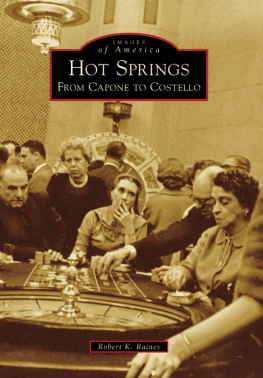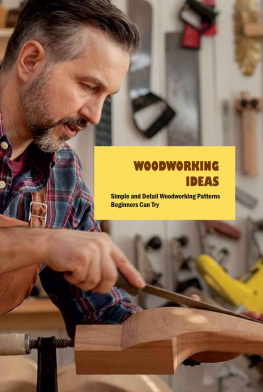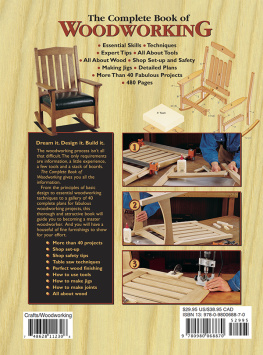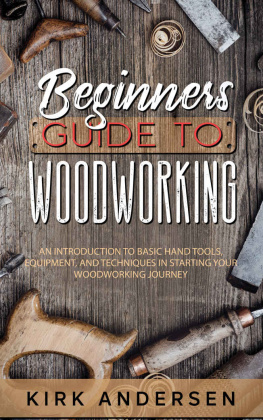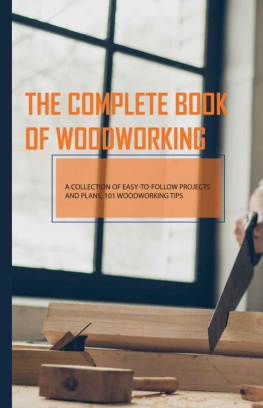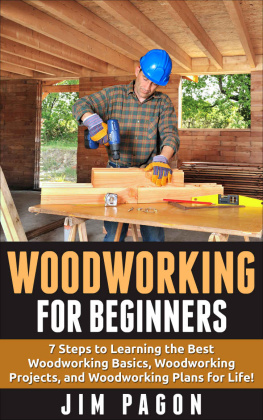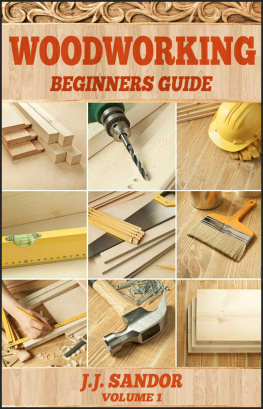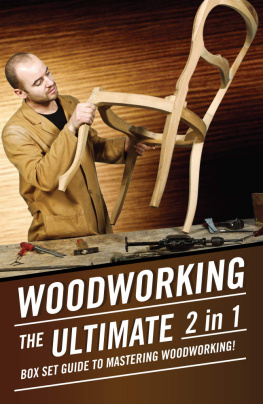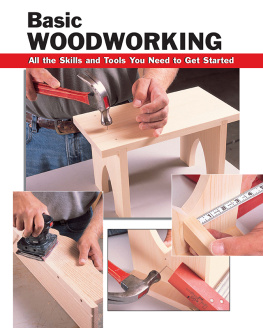WOODWORKING
A Step-by-Step Guide to Essential Woodworking Skills, Tips and Projects for Beginners
By Jason Raines
Copyright 2020 - All rights reserved.
The content contained within this book may not be reproduced, duplicated or transmitted without direct written permission from the author or the publisher.
Under no circumstances will any blame or legal responsibility be held against the publisher, or author, for any damages, reparation, or monetary loss due to the information contained within this book. Either directly or indirectly.
Legal Notice:
This book is copyright protected. This book is only for personal use. You cannot amend, distribute, sell, use, quote or paraphrase any part, or the content within this book, without the consent of the author or publisher.
Disclaimer Notice:
Please note the information contained within this document is for educational and entertainment purposes only. All effort has been executed to present accurate, up to date, and reliable, complete information. No warranties of any kind are declared or implied. Readers acknowledge that the author is not engaging in the rendering of legal, financial, medical or professional advice. The content within this book has been derived from various sources. Please consult a licensed professional before attempting any techniques outlined in this book.
By reading this document, the reader agrees that under no circumstances is the author responsible for any losses, direct or indirect, which are incurred as a result of the use of information contained within this document, including, but not limited to, errors, omissions, or inaccuracies.
Table of Contents
introduction
Woodworking is one of those skills that can cost a bit of money to get started, since you need to get both tools and supplies. It quickly pays for itself with the amazing things you are able to create. In this book we are going to focus on making some of those amazing things. Not all of them, of course, since a book can only contain so many and the number of projects you can create through woodworking is only limited by your imagination. If you apply your creativity to your woodworking then there is no limit to what you can create and the projects in this book have been chosen for both their practical value as well as their educational value.
First, it is important to take a moment to ensure that you have come to this book for the right reasons. Namely, that you arent confusing woodworking with carpentry. This is a common mistake that beginners make so let us get it out of the way quickly.
Carpentry is the act of joining together pieces of wood in order to create structures. These are your houses, your apartments, your sheds and your barns. If you are looking to make a new barn for your backyard homestead or if youre looking to build your own house then you are going to want to find a book that is focused on carpentry. In this book our attention is on woodworking.
So what exactly is woodworking? Woodworking is the act of using our carpentry skills to create objects made from wood. The use of the term carpentry skill here is to let us know that woodworking still focuses on the joining together of different pieces of wood. The key point here, however, is that woodworking focuses on objects. From dinner tables to chairs, cabinets to standing closets, woodworking is all about these objects. They dont need to just be those found inside your house as these examples imply, though. They simply need to be made of wood.
In this book were going to give our attention over to the various projects we can make. Before we dig into the projects were going to take a few minutes to discuss Woodworking 101. Were going to briefly talk about how to get into woodworking, where we should be working our wood and what projects are perfect for beginners. This will make up our first chapter.
The second chapter will complete this section of the book by taking a quick look at the tools we use when working with wood. From simple handheld tools like hammers through to complex saws and planers, well cover not only these tools but well even take a quick look at the various kinds of wood we can use. If you thought all wood was the same then youre in for a shock!
With Chapter Three, we move into the second section of the book, the real meaty part which inspired me to write it in the first place. This chapter is entirely focused on the different techniques that we use when working with wood. These are important because theyre what well be using as we move through the rest of the book.
Chapter Four brings us to the projects. Specifically, well be starting with a look at storage projects. Youll learn how to make your own workbench for your woodshop, plus how you can make a standing cabinet to store your tools, clothes or really anything you want.
Chapter Five then looks at indoor projects. These are things like chairs, tables, hanging shelves. Take a quick look around the room youre in and see how many objects you can spot that are made out of wood. Just around me I have bookshelves, the desk Im writing at, a nightstand to hold up my fish tank and a barstool. Each of these could be considered an indoor project. How many did you find around you?
Chapter Six moves us outside. We can use our woodworking skills to build raised garden beds, sitting benches, garden trellises, birdhouses, picnic tables. The list is as long and varied as the list of indoor projects is, so much so that well only be able to look at a handful of the possibilities. To even try to curate a list of every possible outdoor project would be an overwhelming endeavor.
Finally, we reach Chapter Seven. In this final chapter, well look at how to apply a finish to our project. Considering that it comes at the end of the project, the term finish is rather appropriate and so it makes sense to close out the book with this discussion. For those that dont know, a finish is a stain, paint or lacquer coat which we use to really make our projects standout. A plain looking project becomes a masterpiece with the right finish.
So if youre excited to get building your own projects with your woodworking skills then youve come to the right place. What are you waiting for? Flip the page and dive in !
Chapter One: Getting Started
Everybody has to start somewhere. Woodworkers need to start with preparing their working space and acquiring tools and this book needs to start with Chapter One. Why dont we combine the two together and spend this chapter getting our work space set up and prepared so we can get to the projects that much faster.
In this chapter, well look at how we acquire the gear we need to work with wood. From there, well discuss how we decide on a space to build in, how we properly light our chosen space and what projects are best for beginners.
Gearing Up
Gearing up is one of the funnest parts of learning any new skill. Who doesnt like getting their hands on some new toys to play with? Its like being a kid in the toy store all over again, only this time around its a hardware store and it costs quite a bit more. I guess thats one of the few disappointments that comes with growing up.
The fact that it can cost an arm and a leg to get your woodshop up and running cant be ignored. This is a skill that can be incredibly expensive if youre not careful. Or, rather, its expensive if you dont plan things out properly. I am a firm believer that planning makes all the difference, whether that means planning before a project or planning to make your own woodshop. If you plan out your purchases youll find that they hurt your pocketbook far less while having the added benefit of not just sitting around and taking up space.


